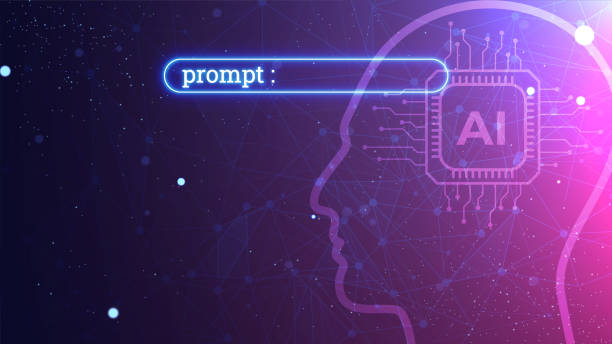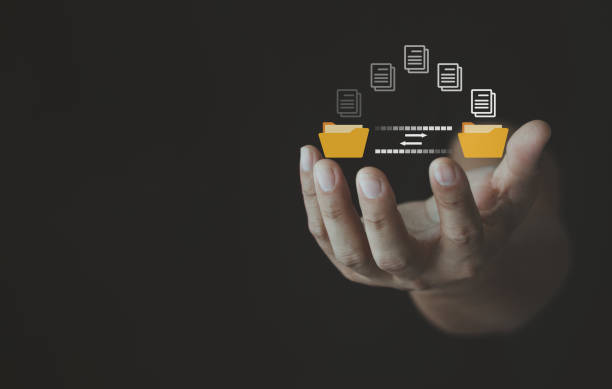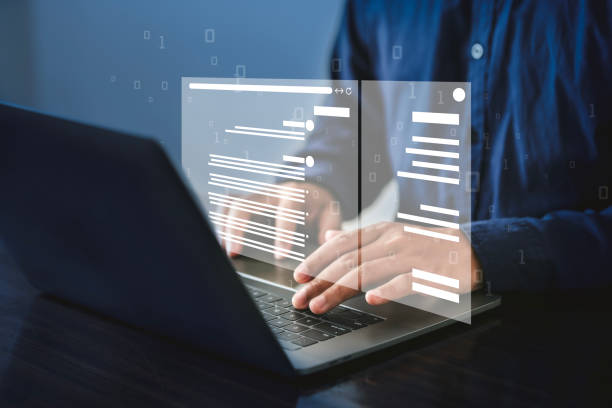What is an Artificial Intelligence Robot and How Does it Work?

Artificial Intelligence Robot is a combination of two important areas of technology: #Artificial_Intelligence (AI) and robotics.
In simple terms, these robots are devices that, using artificial intelligence algorithms, are capable of performing tasks that usually require human intelligence.
These tasks can include learning, reasoning, problem-solving, pattern recognition, and decision-making.
The basis of these robots is to receive information from the environment through sensors, process this information by artificial intelligence systems, and then take appropriate actions through actuators.
For example, an artificial intelligence robot used in a factory to inspect the quality of products can use cameras to receive images of products, use Computer Vision algorithms to detect potential defects, and then inform the control system to remove the defective product from the production line.
In fact, the Artificial Intelligence Robot tries to increase efficiency and accuracy in performing various tasks by imitating human cognitive processes.
You can find more information about artificial intelligence on Wikipedia.
These advanced robots are capable of operating automatically in various and complex conditions and helping to improve the performance of systems.
Does your current company website present a worthy image of your brand and attract new customers?
If not, turn this challenge into an opportunity with Rasaweb’s professional company website design services.
✅ Dramatically improves the credibility and image of your brand.
✅ Smooths the path for attracting new leads and customers for you.
⚡ Contact Rasaweb now for free and specialized consultation!
Diverse Applications of Artificial Intelligence Robots in Various Industries
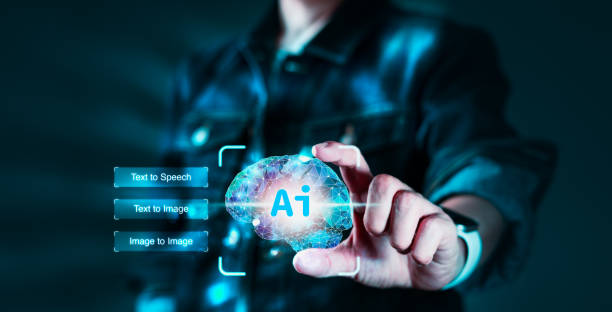
The applications of Artificial Intelligence Robots are very wide and diverse and have affected almost all industries.
In the #Healthcare industry, robots can help doctors in precise surgeries, patient care, and even disease diagnosis.
For example, surgical robots can perform complex operations with very high precision and with minimal invasiveness.
In the #Manufacturing industry, artificial intelligence robots can be used to perform repetitive and dangerous tasks, inspect product quality, and optimize production processes.
In the #Agriculture industry, these robots can help farmers with intelligent irrigation, harvesting products, and detecting pests.
Also, in the #Services industry, artificial intelligence robots can be used as virtual assistants, answering customer questions, and providing support services.
In addition, in the field of education, artificial intelligence robots can be used as private tutors, providing personalized educational content, and evaluating student performance.
In general, Artificial Intelligence Robots play an important role in the development of various industries by increasing efficiency, reducing costs, and improving the quality of services.
Applications of Artificial Intelligence from IBM’s Perspective
Advantages and Disadvantages of Using Artificial Intelligence Robots
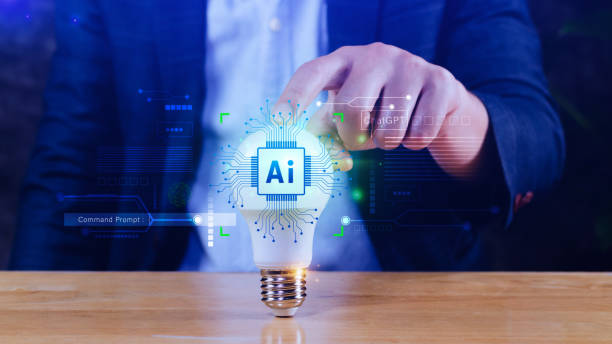
The use of Artificial Intelligence Robots has many advantages and disadvantages that need to be carefully considered.
Among the advantages of these robots are increasing #accuracy, #speed, and #efficiency in performing tasks, reducing production costs, and the ability to perform dangerous and repetitive tasks.
Also, artificial intelligence robots can work continuously and without fatigue and collect and analyze a lot of data, which can help improve processes and decision-making.
On the other hand, the use of these robots also has disadvantages.
One of the most important disadvantages is the high cost of #purchasing, #installing, and #maintaining them.
Also, replacing human labor with robots can lead to #unemployment and social problems.
In addition, issues related to #information_security and #privacy are also among the challenges of using artificial intelligence robots.
For example, if an artificial intelligence robot gains access to people’s personal information, that information may be misused.
Therefore, for optimal use of Artificial Intelligence Robots , the advantages and disadvantages must be carefully evaluated and appropriate solutions must be adopted to reduce the disadvantages and increase the advantages.
| Advantages | Disadvantages |
|---|---|
| Increased accuracy and speed | High cost |
| Reduced production costs | Possibility of unemployment |
| Performing dangerous tasks | Security issues |
Ethical and Social Challenges of Using Artificial Intelligence Robots
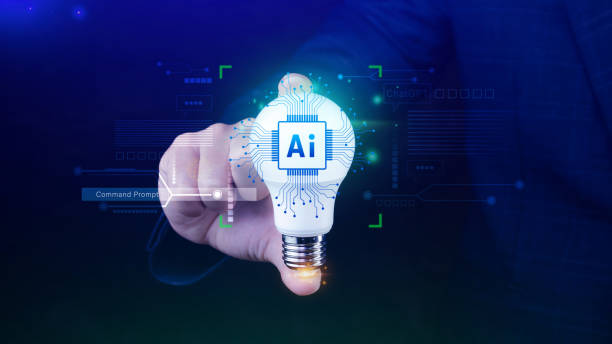
The widespread use of Artificial Intelligence Robots has created numerous ethical and social challenges that need careful attention and consideration.
One of the most important of these challenges is the issue of #accountability.
This means that if an artificial intelligence robot makes a wrong decision and causes damage, who will be responsible for this damage? Should the robot’s manufacturer, its user, or the robot itself be held responsible? Another challenge is the issue of #discrimination_and_inequality.
If artificial intelligence algorithms are trained on biased data, they may make decisions that benefit certain groups of society and harm others.
Also, the issue of #privacy and #information_security are also important challenges.
Artificial intelligence robots usually have access to a lot of personal information, and if this information is not properly protected, it may be misused.
In addition, the use of robots in #war and #automatic_weapons also creates serious ethical challenges.
In general, to face these challenges, appropriate laws and regulations need to be developed and clear ethical standards need to be set for the development and use of Artificial Intelligence Robots .
Are you tired of missing business opportunities due to not having a professional company website? Don’t worry anymore! With Rasaweb’s company website design services:
✅ The credibility and professionalism of your brand increases.
✅ You attract more customers and sales leads.
⚡ Get a free consultation now to get started!
The Future of Artificial Intelligence Robots and Its Impact on Human Life

The future of Artificial Intelligence Robots is very bright and full of developments, and it is expected that these robots will play a very important role in human life.
With the increasing advances in the fields of #Artificial_Intelligence, #Machine_Learning, and #Robotics, future robots will be able to perform more complex tasks and interact with humans more naturally and effectively.
For example, home robots can help family members, take care of children and the elderly, and even assist them in doing daily tasks.
In work environments, robots can help perform repetitive and tedious tasks and allow humans to focus on more creative and strategic tasks.
Also, in the field of #health, robots can help surgeons perform complex operations, help patients in rehabilitation, and even help develop new drugs.
However, to fully benefit from the advantages of Artificial Intelligence Robots , the ethical and social challenges must also be considered and appropriate solutions must be adopted to manage these challenges.
The future of artificial intelligence from the perspective of the European Parliament
How is an Artificial Intelligence Robot Made?

Building an Artificial Intelligence Robot is a complex and multi-stage process that requires expertise in various fields including #Robotics_Engineering, #Computer_Science, and #Artificial_Intelligence.
In general, this process includes the following steps: hardware design, selection and installation of sensors and actuators, software development and artificial intelligence algorithms, and testing and evaluation of robot performance.
In the #hardware design stage, a suitable physical platform for the robot must be designed that can withstand the weight and dimensions of different parts and enable movement and performance of desired tasks.
In the stage of selecting and installing sensors and actuators, sensors must be selected that can collect the required information from the surrounding environment (such as cameras, microphones, and temperature and pressure sensors) and actuators must be selected that can execute commands (such as motors, pumps, and robotic arms).
In the stage of developing #software and #artificial_intelligence_algorithms, algorithms must be developed that can process the information collected by the sensors, make appropriate decisions, and send the necessary commands to the actuators.
Finally, in the stage of testing and evaluating the robot’s performance, the robot must be tested in different conditions and its performance must be evaluated to ensure that the robot works correctly and can perform the desired tasks correctly.
Robot Building Guide from IEEE Spectrum
Different Types of Artificial Intelligence Robots
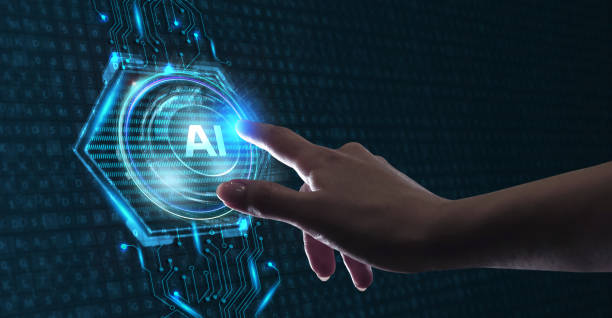
Artificial Intelligence Robots are designed and built in various types, each of which is suitable for specific applications.
One of the common types is #service_robots, which are used to perform service tasks in various environments such as homes, hospitals, and hotels.
These robots can act as cleaners, caterers, or caregivers.
Another type is #industrial_robots, which are used to perform production tasks in factories and production lines.
These robots can act as assemblers, welders, or quality inspectors.
#Military_robots are also another type of artificial intelligence robots that are used to perform military tasks on the battlefield.
These robots can act as spies, fighters, or mine sweepers.
In addition, #medical_robots are also used to perform medical tasks in hospitals and treatment centers.
These robots can act as surgeons, nurses, or pharmacists.
Each of these types of Artificial Intelligence Robots has special features and capabilities that make them suitable for performing specific tasks.
| Robot Type | Application |
|---|---|
| Service | Cleaning, catering |
| Industrial | Assembly, welding |
| Military | Espionage, war |
| Medical | Surgery, nursing |
The Role of Artificial Intelligence Robots in Education
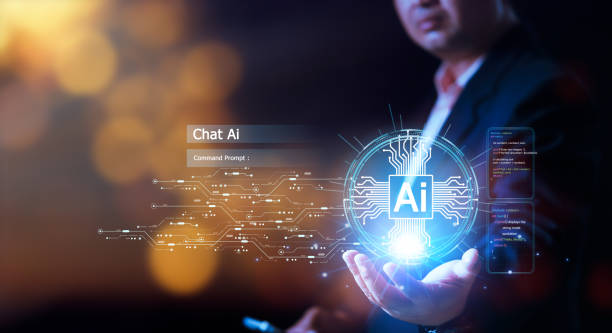
Artificial Intelligence Robots can play a very important role in the transformation of education.
These robots can be used as #private_tutors, providing personalized educational content, and evaluating student performance.
For example, an artificial intelligence robot can analyze the strengths and weaknesses of each student, provide appropriate educational content for him, and help him improve in areas where he has problems.
Also, these robots can help teachers to automatically perform administrative and repetitive tasks and spend more time interacting with students and providing quality education.
In addition, artificial intelligence robots can help create #interactive_and_engaging_learning_environments and increase students’ motivation to learn.
For example, an artificial intelligence robot can act as a playmate for students and help them learn complex concepts through play and entertainment.
Artificial Intelligence in Education from EdSurge’s Perspective
How much does losing business leads due to a non-professional website cost you? Solve this problem forever with professional company website design by Rasaweb!
✅ Increased credibility and trust of potential customers
✅ Easier attraction of new business leads
⚡ Get a free consultation right now!
The Impact of Artificial Intelligence Robots on the Job Market
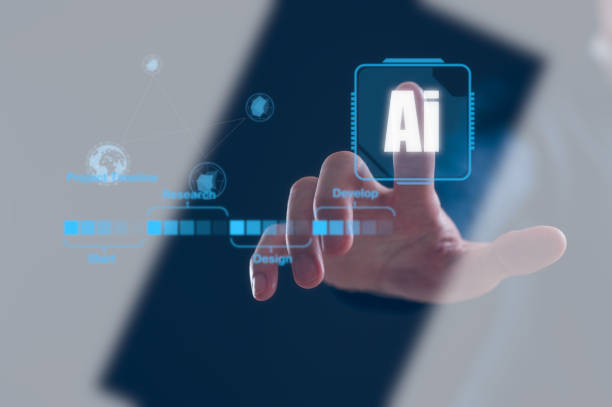
The impact of Artificial Intelligence Robots on the labor market is one of the most discussed topics.
On the one hand, these robots can increase productivity and efficiency and reduce production costs by #automating repetitive and tedious tasks.
This can lead to increased profitability for companies and create new job opportunities in areas related to the design, development, and maintenance of robots.
On the other hand, replacing human labor with robots can lead to #unemployment and social problems.
In particular, jobs that require low skills and repetitive tasks are more at risk of being replaced by robots.
To face this challenge, governments and organizations need to develop policies and programs that help people learn new skills and prepare for new jobs.
Also, it should be noted that robots cannot replace all jobs and some jobs require #human_skills that robots cannot imitate (such as creativity, empathy, and critical thinking).
Artificial Intelligence Robots , as a powerful tool, can help improve human lives, but their impact on the labor market must be carefully considered and appropriate solutions must be adopted to manage this impact.
Security Considerations in Using Artificial Intelligence Robots
![]()
The use of Artificial Intelligence Robots requires attention to security considerations.
These robots, due to access to sensitive information and the ability to perform various tasks, can be attractive targets for #cyberattacks and #abuse.
For example, a hacker can force an artificial intelligence robot to perform malicious tasks or steal sensitive information by infiltrating its control system.
Also, if an artificial intelligence robot gains access to people’s personal information, that information may be misused.
To prevent these risks, appropriate security measures must be taken.
These measures may include the use of #strong_encryption, #two-factor_authentication, and #continuous_monitoring of systems.
Also, it must be ensured that artificial intelligence robots are regularly updated and their security vulnerabilities are addressed.
In addition, the necessary training should be provided to users so that they can use the robots correctly and be aware of potential risks.
Finally, it should be noted that the security of Artificial Intelligence Robots is an ongoing process and requires constant attention and effort.
Frequently Asked Questions
| Question | Answer |
|---|---|
| What is an Artificial Intelligence Robot? | It is a robot that uses artificial intelligence capabilities to understand the environment, reason, learn, and make decisions in order to perform complex tasks independently. |
| What is the main difference between a regular robot and an artificial intelligence robot? | Artificial intelligence robots can learn and adapt to their environment, while regular robots usually operate based on fixed and predetermined programming. |
| In what areas are artificial intelligence robots used? | In areas such as industry (production lines), medicine (robotic surgeries), services (customer support, smart vacuum cleaners), exploration (space and underwater) and entertainment. |
| How do artificial intelligence robots learn? | They acquire new skills through machine learning algorithms (Machine Learning) and deep learning (Deep Learning), by analyzing big data and identifying patterns. |
| Can artificial intelligence robots have emotions? | Currently, no. They can identify or simulate emotions, but they do not have the actual experience of emotions like humans. |
| What are the most important advantages of using artificial intelligence robots? | Increased productivity, reduced human error, performing dangerous or repetitive tasks, and providing new and efficient services. |
| What are the challenges in developing artificial intelligence robots? | The need for abundant and high-quality data, the complexity of algorithms, ethical issues, cybersecurity, and the high cost of research and development. |
| Are artificial intelligence robots dangerous to humans? | By following safe design principles and ethical regulations, no. Concerns are more related to social and economic impacts such as changes in the labor market. |
| What is an example of an artificial intelligence robot in everyday life? | Smart vacuum cleaners (such as Roomba) that automatically map and clean the house, or smart voice assistants (such as Siri and Alexa). |
| How is the future of artificial intelligence robots predicted? | They are expected to become smarter, more autonomous, and capable of more complex interaction with humans, and play a more prominent role in industry, medicine, transportation, and everyday life. |
And other services of Rasa Web Advertising Agency in the field of advertising
Smart social media: A creative platform to improve customer behavior analysis with custom programming.
Smart website development: A creative platform to improve sales growth with smart data analysis.
Smart marketing automation: Designed for businesses looking to grow online by customizing the user experience.
Smart sales automation: A combination of creativity and technology for user engagement by managing Google Ads.
Smart brand identity: A professional solution for managing campaigns with a focus on SEO-driven content strategy.
And more than hundreds of other services in the field of internet advertising, advertising consulting and organizational solutions
Internet advertising | Advertising strategy | Advertisement reports
Resources
Artificial Intelligence Robots: History, Applications and Future
,What is a smart robot and how does it work?
,Smart Robot; The Most Secure, Universal Blind in the World
,Will robots replace us? – Artificial Intelligence (AI) and Automation
? Take your business to the top with Rasa Web Afarin Digital Marketing Agency services! At Rasa Web Afarin, we specialize in providing comprehensive digital solutions for the growth and development of your business. From professional website design and SEO to social media management and targeted advertising campaigns, we provide everything you need to be seen and succeed online.
📍 Tehran, Mirdamad Street, next to the Central Bank, Kazerun Jonubi Alley, Ramin Alley No. 6
“`

